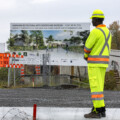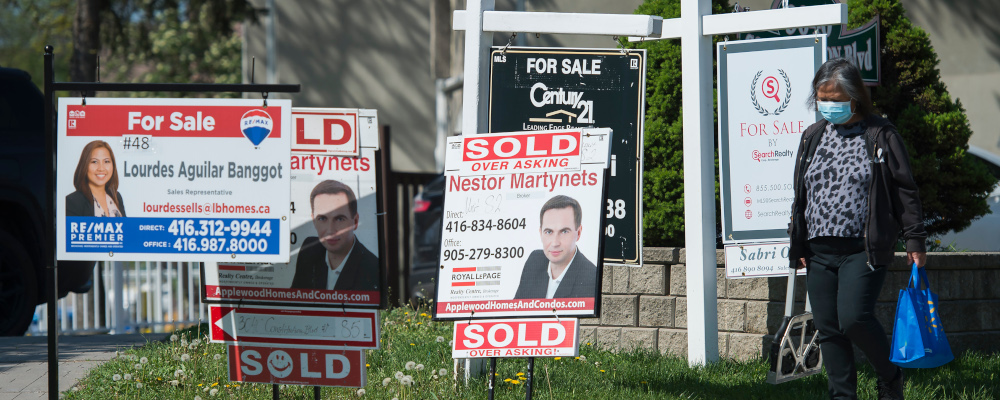Ask a Canadian why home prices are so high and you’ll certainly get a whole host of answers from foreign buyers to greedy investors and, up to recently, a long period of low interest rates.
But the most common answer you are likely to hear is that a lack of supply of new housing in Canada is the primary cause of the high cost of housing.
The lack of supply narrative has been the dominant explanation for high home prices in Canada over the past five years. Every level of government in Canada cites a lack of supply as the primary cause for high home prices and countless academic and bank economists have made the same argument. Scotiabank’s chief economist went so far as to argue that a lack of supply was the underlying cause “for rising prices and diminished affordability”. When an economist says A causes B they mean that the relationship is a statistical fact rather than an opinion.
The debate regarding the key drivers of high home prices has been so one-sided it led Howard Anglin, former deputy chief of staff under Stephen Harper, to write a column in The Hub in 2021 titled, “The one factor in the housing bubble that our leaders won’t talk about.”
What’s the one factor not talked about? How Canada’s immigration boom is impacting the demand for housing and, by extension, increasing the cost of housing.
Over the previous decade, Canada admitted roughly 275,00 new immigrants each year. In 2022, Canada saw a record 431,645 new permanent residents and this number is expected to reach 500,000 annually by 2025.
An unequal two-sided problem
When considering these two demand and supply factors alone, demand for homes due to changes to Canada’s immigration level and the lack of supply of new homes to meet this demand, we see an interesting phenomenon. One factor, the lack of supply, has been discussed for many years, and year after year, political efforts to mitigate this issue have failed. The other factor, immigration, is one that policymakers have far more control over.
Policymakers don’t have any direct control over the number of new homes developers launch and complete each year, a number that has always been hard to achieve due to labour shortages and other factors, and is only expected to decline in the years ahead due to higher interest rates and the current economic uncertainty.
So why has the debate about the high cost of housing focused on a solution that policymakers have no direct control over, building more homes, as opposed to addressing the demand for housing from changes in our immigration level, something policymakers have direct control over?
I’ll highlight what I believe are the two primary reasons.
The false lure of the zoning panacea
A popular area of academic research has been to explore the role that local zoning policies have on the supply of new housing and home prices, and the academic conclusions on the surface sound very intuitive.
Municipalities that have relatively few zoning restrictions on the supply of new housing tend to have more affordable homes and experience more moderate growth in house prices because builders can more easily adjust to changes in demand by building more homes. Academics also argue that these cities with few zoning restrictions have fewer and shorter housing bubbles.
I’ll admit, it’s a wonderful story! If cities simply remove zoning barriers to new housing, builders will flood our market with new homes putting an end to years of rapid price growth and leaving us with an affordable housing market for all.
Unfortunately, the academic theories don’t hold up very well in the real world. Many of the cities that economists cite as having relaxed zoning policies which, in theory, should see modest price growth, such as U.S. cities like Houston, Atlanta, and Charlotte, have all seen a significant surge in home prices over the past decade. Cities like Phoenix in the U.S. and Dubai more globally which have relatively relaxed zoning policies experienced housing bubbles during the first decade of the 2000s because the supply of housing wasn’t able to keep up with the sudden surge in demand from investors.
The fact is that even with relaxed zoning policies, it’s very hard for the construction sector to respond to a rapid surge in demand for housing.
A report by the Bank of Montreal found that countries with higher rates of population growth also saw the most rapid increase in home prices, a result that is intuitively obvious, and one we are seeing in Canada. While it’s very easy for our government to double the number of immigrants moving to Canada each year, it’s extremely hard for them to double the number of homes being built to house these new Canadians. When housing completions don’t increase enough to match a country’s immigration goals, the result is what we are experiencing in Canada: a spike in the cost of housing.
Despite the evidence, the solution to our housing crisis promoted by our policymakers and expert economists continues to be rooted in the delusion that housing supply can respond to any sudden surge in the demand for housing if we simply reform zoning policies.
This does not mean supply-side reforms that encourage more housing and more density are not important, they are. But supply-side policies alone are not the panacea to our housing crisis that some academics and economists make them out to be.
A politically sensitive issue
The other likely reason that many economists have argued that a lack of supply is the cause for high home prices is because any suggestion that Canada’s record high immigration levels may in fact be the bigger driver of home prices runs the risk of being called xenophobic. I’ve experienced this myself from self-described “housing advocates” who believe that with the right zoning reforms, there is no limit to how many homes Canada can build.
But questioning what is the right level of immigration for our country, and whether the current level is doing more harm than good, isn’t xenophobic at all. It’s a critical policy question that for a long time has been ignored out of fear that one might be called a racist for even raising the question.
But the times are changing.
Over the past month we have seen a significant shift in this discussion. More journalists, economists, and editorials are questioning the goal of our federal government’s immigration strategy and whether their current immigration targets are doing more harm than good.
After years of silence regarding the impact our government’s immigration policies are having on healthcare, housing, and wages, more and more experts are starting to ask some very important questions. And not surprisingly, in virtually every column the author clarifies that they are not xenophobic or against immigration, but are noting some of the negative side effects of our country’s aggressive immigration strategy.
Why are more experts starting to talk about our government’s immigration targets?
It’s becoming clearer that the federal Liberal government’s strategy to nearly double the number of immigrants admitted to Canada each year without making the necessary investments to support them is straining our housing markets and health-care system.

A demand crush that further hurts renters
The other important factor is that many of the negative side effects of Canada’s immigration strategy are starting to be felt most by the poorest and most marginalized communities in Canada—including many of these immigrants themselves.
While the discussion about Canada’s housing crisis often centres around the high price of homes and its impact on first-time buyers, a bigger concern should be how our government’s policies are driving up the cost of renting as renters typically have much lower household incomes as compared to homeowners, and unlike homeowners they don’t benefit financially from the rising cost of housing.
To provide some context to the recent acceleration in rents, it is helpful to compare how average rents have changed before and after the current Liberal government took office in 2015.
Under the previous federal Conservative government, the average rent for a Toronto condominium went from $1,570 in 2006 to $1,866 in 2015, a $297 (or 19 percent) increase in nine years. In contrast, average rents under our current Liberal government have climbed from $1,866 in 2015 to $2,657 in 2022, a $791 (or 42 percent) increase in just seven years.
Am I suggesting that our current government’s change in immigration policy alone is responsible for this outsized increase in average rent in Toronto? Of course not, but of the most common explanations for the high cost of housing, from foreign buyers to low interest rates and even irrational exuberance, this one has the most direct impact on rents.
Calculating the demand and price of a property is more complex as the source of capital and the cost of debt are all important factors, alongside the usual factors such as the number of households requiring housing. Rent, on the other hand, is simply the cost of housing services, a cost more closely linked to the demand and supply for housing services, and not as impacted by other factors.
It’s worth noting that the higher appreciation in condo rents since 2015 was not due to a lack of building. Average annual condo completions were 12 percent higher after 2015 when compared to the period before 2015. This additional supply didn’t cool condo rents because Canada’s population was growing faster than these housing completions.
The impact of—and on—foreign students
The other aspect of Canada’s immigration policies that is often overlooked is the growth in the number of international students attending universities, which are not directly included in Canada’s immigration numbers today. An important part of Canada’s immigration pipeline, the number of foreign study permit holders in Canada has climbed from 352,330 in 2015 to 621,565 in 2021.
The Globe and Mail’s Matt Lundy argues that there is a simple explanation for this boom in foreign students: money.
The annual tuition for foreign students is five times what domestic students pay, so post-secondary institutions are doing what any profit-maximizing corporation would do: they are admitting as many foreign students as they can.
But unlike Canada’s program for permanent residents, there are no targets for foreign study permit holders—post-secondary institutions can admit as many students as they want each year. But while these institutions have the right to maximise their profits by admitting as many foreign students as possible, they have no obligation to ensure there is adequate housing for the students they are admitting. The lack of planning and investment from post-secondary institutions into the housing needs of their students means that the burden of Canada’s housing crisis has fallen in part on these often financially stretched students who are moving to Canada for a better life but are left feeling exploited. When foreign students are fighting for the most affordable rentals in their community, it also puts pressure on low-income households looking for the same.
It’s time to start asking harder questions about the negative side effects of Canada’s immigration policy. As economist David Green wrote, immigration is not some magic pill for saving the economy.
Recommended for You

‘America’s word is no longer good’: David Frum on the Ukraine-Russia peace plan and the rise of the extremist Right in America

How Moonshot Zones could kickstart Canada’s AI-driven industrial future: Hunter Prize 2025

One Canadian economy? Not quite yet

One key way municipalities can unlock Canada’s economic growth: Hunter Prize 2025



